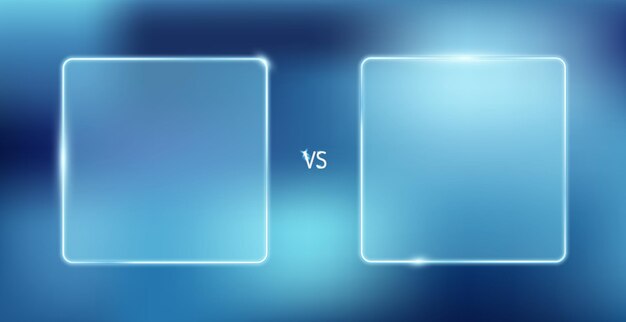Table of Contents
Introduction
Glass is an essential element in modern design, providing both functionality and aesthetic appeal. When choosing between frosted and clear glass, it’s crucial to understand the strengths and weaknesses of each option. This guide compares frosted vs. clear glass uses, highlighting their pros and cons to help you make an informed decision for your next project.
What Is Frosted Glass?
Frosted glass is made by treating clear glass with processes like sandblasting or acid etching to create a textured, translucent surface. This texture scatters light, offering privacy while allowing natural light to filter through.
Common Uses of Frosted Glass

- Bathrooms: Ideal for shower enclosures and windows.
- Office Spaces: Used in partitions to provide privacy without blocking light.
- Decorative Features: Popular for glass doors, tabletops, and cabinetry.
What Is Clear Glass?
Clear glass, as the name suggests, is completely transparent, offering unobstructed views. Its simplicity and versatility make it a popular choice for various applications.
Common Uses of Clear Glass
- Windows: Perfect for maximizing natural light and views.
- Doors: Popular for sliding doors and entryways.
- Furniture: Used in tabletops, shelves, and decorative items.
Frosted vs. Clear Glass: Pros and Cons
1. Privacy
- Frosted Glass: Offers excellent privacy by obscuring views while allowing light to pass through.
- Clear Glass: Provides no privacy unless paired with curtains, blinds, or window films.
2. Aesthetic Appeal
- Frosted Glass: Creates a modern, sophisticated look that complements contemporary spaces.
- Clear Glass: Offers a timeless, clean appearance that fits seamlessly with any design style.
3. Light Transmission
- Frosted Glass: Diffuses light, creating a soft, ambient glow.
- Clear Glass: Maximizes light transmission, making spaces appear brighter and more open.
4. Maintenance
- Frosted Glass: Hides fingerprints and smudges better than clear glass, requiring less frequent cleaning.
- Clear Glass: Requires regular cleaning to maintain its clarity and shine.
5. Cost
- Frosted Glass: Typically more expensive due to the additional processing required.
- Clear Glass: More affordable and widely available.
Comparing Applications: Frosted vs. Clear Glass Uses
1. Home Interiors
- Frosted Glass: Best for areas where privacy is essential, such as bathrooms, bedrooms, and home offices.
- Clear Glass: Ideal for open-concept designs, living rooms, and spaces with a focus on natural light.
2. Office Spaces
- Frosted Glass: Used in conference rooms and partitions to balance privacy and openness.
- Clear Glass: Suitable for shared workspaces and areas where collaboration is encouraged.
3. Retail and Commercial Spaces
- Frosted Glass: Adds a touch of sophistication to storefronts and display cases.
- Clear Glass: Attracts attention by showcasing products clearly.
Durability and Safety
Both frosted vs. clear glass can be made from tempered glass for added strength and safety. This ensures they are durable, impact-resistant, and safe for high-traffic areas.
Energy Efficiency
Frosted Glass
- Reduces glare and helps maintain consistent indoor temperatures by diffusing light.
- Can be paired with energy-efficient coatings for enhanced insulation.
Clear Glass
- Allows for maximum solar heat gain, which can be advantageous in colder climates.
- Can be treated with low-emissivity (Low-E) coatings to improve energy efficiency.
Customizability
Both frosted vs. clear glass are highly customizable, allowing you to choose from various shapes, sizes, and finishes. Frosted glass can feature etched designs or patterns, while clear glass can be tinted or layered for a unique look.
Choosing the Right Glass for Your Project
Factors to Consider
- Privacy Needs: Choose frosted glass for areas requiring more privacy.
- Aesthetic Preferences: Consider the style and ambiance you want to achieve.
- Functionality: Assess the purpose of the glass, such as decorative or structural.
- Budget: Keep in mind the cost differences between frosted and clear glass.
Pro Tip:
For a balanced approach, consider combining both types of glass. For instance, use frosted vs. clear glass for bathroom windows and clear glass for living room panes.
Maintenance Tips for Frosted and Clear Glass
Frosted Glass Maintenance
- Clean with a soft cloth and mild detergent to avoid damaging the textured surface.
- Avoid abrasive cleaners that could scratch the finish.
Clear Glass Maintenance
- Use a glass cleaner and microfiber cloth for streak-free shine.
- Regularly check for scratches or chips and address them promptly.
Eco-Friendly Considerations
Both frosted and clear glass can be made from recycled materials, offering an environmentally friendly option. Look for manufacturers that prioritize sustainability in their production processes.
Future Trends in Glass Design
- Smart Glass Technology: Both frosted and clear glass are being integrated with smart technology for adjustable opacity.
- Eco-Friendly Innovations: Increased focus on recycled glass and energy-efficient coatings.
- Customization: Greater demand for personalized designs, such as frosted patterns and tinted clear glass.
Conclusion
Choosing between frosted and clear glass ultimately depends on your specific needs and design preferences. Frosted glass excels in privacy and elegance, while clear glass offers unmatched transparency and light transmission. By understanding the frosted vs. clear glass uses, you can make an informed decision that enhances both functionality and aesthetics in your space.
Whether you’re designing a home, office, or commercial setting, the right type of glass can elevate your project to the next level.
FAQs
1. Can frosted glass be used for exterior windows?
Yes, frosted glass is ideal for exterior windows in areas where privacy is needed without compromising natural light.
2. Is clear glass cheaper than frosted glass?
Typically, yes. Clear glass is more affordable because it doesn’t require additional processing like frosting.
3. Can frosted glass be customized with designs?
Absolutely! Frosted glass can feature etched or sandblasted patterns for a unique look.
4. Does frosted glass block light completely?
No, frosted glass diffuses light but doesn’t block it entirely, creating a soft, ambient glow.
5. Which is easier to clean: frosted or clear glass?
Frosted glass hides smudges better, making it easier to maintain, while clear glass requires regular cleaning to preserve its clarity.
